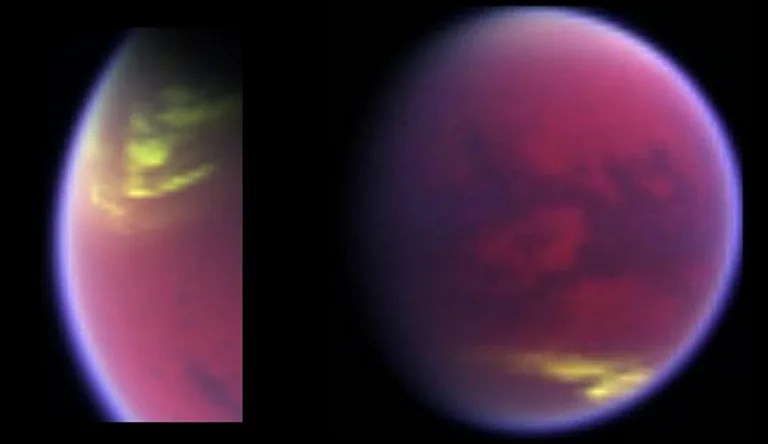1 min read

The composite infrared spectrometer (CIRS) focuses on temperature mapping of the stratosphere, including continuing monitoring of the changing vertical structure as the northern hemisphere warms through Titan's northern spring. At closest approach, the visible and infrared mapping spectrometer (VIMS) will ride along with CIRS and will map the Huygens landing site at medium resolution. The Cassini plasma spectrometer (CAPS) will direct pointing to get a good view of the plasma. Then VIMS will image Shangri-La and Adiri at a resolution of 10 kilometers/pixel. VIMS (and the imaging science subsystem [ISS]) will also be looking for clouds at mid latitudes. For MAG, T-73 is a pre-dusk, high altitude (greater than 4,000 kilometer) 'blind' flyby over the south pole of Titan that will be useful to characterize the background field in which Titan sits.
Date
Nov. 11, 2010
Altitude
4,922 miles (7,921 km)
Speed
12,500 mph (5.6 km/sec)







